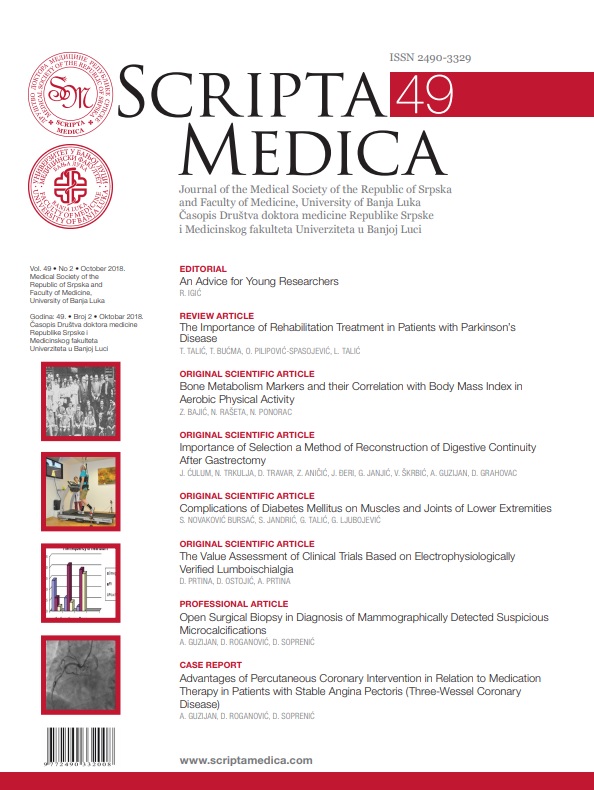An Advice for Young Researchers
DOI:
https://doi.org/10.7251/SCMED1802080IAbstract
For a young researcher, the best way to improve his skills and develop his research capabilities is to work in established research laboratories where he is enabled to learn modern techniques and how to attack the scientific problems. Today, we have easy communications, including computers and the internet, but direct interactions with the most experienced scientists are the best way for young scientist to advance his research capabilities. Ulf Svante von Euler, Swedish pharmacologist and physiologist presents the best example that illustrates how interaction of a young researcher with established scientists develop his research capabilities and become a well-known scientist1.
When Ulf was seventeen (1922), he came in Stockholm to study medicine. As a student, he became interested in research, and in 1926 he attended the Twelfth International Congress of Physiologists in Stockholm where he heard lectures by I. P. Pavlov, E. H. Starling and other great scientists of the time. He also observed a historic demonstration by Otto Loewi on the existence of Vagusstoff in the frog’s heart, which would stimulate his own interest and research on mediators of nerve transmission. Prior to this demonstration, Loewi had published several papers on the nature of this chemical substance that slowed the heart, but not all of his research contemporaries were convinced. However, a successful demonstration at the Congress (repeated eighteen times) convinced all critics. Von Euler recalled that these experiments inspired his enduring interest in neurohumoral transmission.
Initially, von Euler was influenced by several well-known Swedish scientists: G. Liljestrand (pharmacologist/physiologist), R. Fåraeus (a hematologist) and H. Theorell (a biochemist, who received the Nobel Prize for Medicine and Physiology in 1955). Ulf defended his doctoral dissertation in 1930 and became a professor of pharmacology. Then, he received a two-year scholarship for postdoctoral studies abroad that enabled him to improve his skills by working with several famous foreign researchers.
The young Ulf von Euler made the most of this opportunity. He spent six months in Hampstead at Sir Henry Dale’s laboratory, two months in Birmingham with I. de Burgh Daly, eight months in Ghent with C. Heymans, and three months in Frankfurt with G. Embden. Later, in 1934, he returned to London for six months to work with A. Hill, primarily because Liljestrand advised him instead of pharmacology, rather to devote to physiology because at that time in Sweden this scientific discipline was more appreciated. Towards the end of 1937, he went back to Hampstead for five months to work again with Sir Henry Dale.

